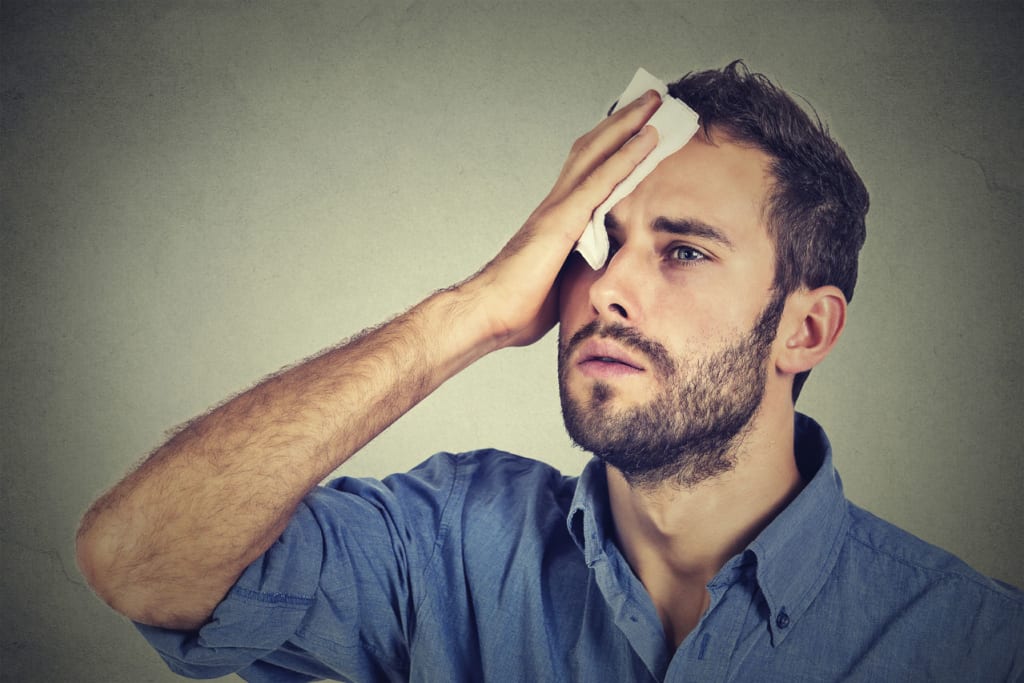If You Experience Excessive Sweating, You May Suffer from Hyperhidrosis
If you are someone who suffers from excessive sweating, there may be a chance that you suffer from this disorder.

What is normal sweating?
Under normal conditions, the human body sweats between 0.8 to 1.4 litres per hour during a good exercise or strenuous work. Sweat does more than a few good things for our body.
The first things sweat is notably known for is keeping us cool. But sweat also cleans poisons from our body and can keep our skin healthy. If we didn't sweat, there is a chance we would eventually die. Therefore, sweating is a very important bodily function that cannot be ignored.
When is too much sweating a problem?
If you are someone who suffers from excessive sweating, there may be a chance that you suffer from a disorder called hyperhidrosis. You may be wondering, what is hyperhidrosis? This article hopes to educate the reader on this condition so that you may seek help or understand what those who suffer it deal with.
Though there isn't substantial research showing the exact number of people afflicted with hyperhidrosis in Australia, it is estimated that around 3 percent of people experience excessive sweating.
There are two different forms of excessive sweating:
- Axillary Hyperhidrosis is excessive sweating of the underarms.
- Palmoplantar Hyperhidrosis is excessive sweating of the palms and/or soles of the feet.
People don't start noticing Axillary Hyperhidrosis until after adolescence, often around age 13 or so. But Palmoplantar Hyperhidrosis can start even earlier than that, depending on the individual. Hyperhidrosis can continue to plague a person well into adulthood if the condition is not treated by a medical professional.
What makes this disorder so uncomfortable to bare for the sufferer is the embarrassment they must endure. Excessive sweating can leave clothes stained, distract from social and professional obligations, as well as strain a romantic life with those who are not understanding.
Believe it or not, there have been severe cases reported that show living with Hyperhidrosis can have some serious practical complications that affect everyday life. They are fearful of shaking hands with others, have a hard time holding ink pens or pencils while writing, and even find it difficult to grip a steering wheel. Of course, playing certain sports can become useless.
Understanding Hyperhidrosis
There are some people who suffer from Hyperhidrosis due to systematic, infectious, endocrine, or neurologic diseases, though a lot of cases have also been reported in relatively healthy persons.
While there are individuals who only notice Hyperhidrosis being triggered by exposure to heat or during highly emotional times, such as embarrassment or nervousness, there are many others who suffer from Hyperhidrosis sweat almost all hours of the day, whether the temperature is hot or chilly, and regardless of what mood they're in.
Treating Hyperhidrosis
Many people can more oftentimes than not see good results and improve their quality of life through a systematic evaluation of triggers and causes. Once this information has been discovered, steps towards some sort of treatment can be made.
These steps are as follows:
- Trying an over-the-counter antiperspirant that contains a low dose of metal salt are tried first. There are also antiperspirants that contain aluminum chloride, such as Certain Dri, that are far more effective than other store bought antiperspirants.
- There are also prescription strength antiperspirants containing aluminum chloride hexahydrate.
- Using a device called an Iontophoresis, which uses direct electricity to pass ionized tap water through the skin.
- Taking oral medications to reduce sweating.
- Botox can be used to help with excessive axillary (underarm) sweating.
- MiraDry is a technique using microwave energy to permanently kill sweat glands.
- Using lasers has the same effects as MiraDry.
- Using a surgical procedure called thoracic sympathectomy is usually used as a last resort.
About the Creator
Andrea Dawson
A fitness blogger and a personal trainer.







Comments
There are no comments for this story
Be the first to respond and start the conversation.